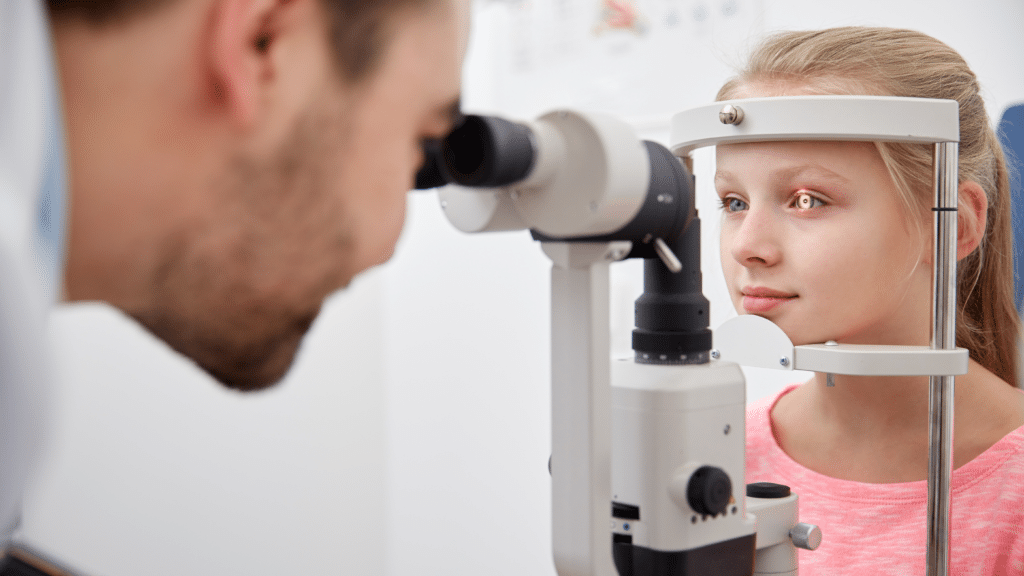
When it comes to children’s eye health, genetics play a pivotal role. Understanding your family’s eye health history can provide critical insights into potential vision issues your child might face. Sharing this information with your eye care provider can significantly enhance the quality of care and preventive measures tailored for your child. As the new school year approaches, it’s the perfect time to prioritize your child’s eye health with a comprehensive back-to-school eye exam at Regional Eye Center!
How Genetics Influence Children’s Eye Health
Many eye conditions have a genetic component, meaning they can be passed down from parents to their children. Common genetic eye conditions include:
Myopia (Nearsightedness): A condition where distant objects appear blurry. If one or both parents are nearsighted, their children are at a higher risk of developing myopia.
Hyperopia (Farsightedness): Difficulty focusing on close objects. This can also be inherited and might require corrective lenses.
Astigmatism: An irregularly shaped cornea leading to blurred vision. Astigmatism often runs in families and can affect both children and adults.
Strabismus (Crossed Eyes): A condition where the eyes do not align properly. Family history can increase the likelihood of a child developing strabismus.
Amblyopia (Lazy Eye): Reduced vision in one eye, often linked to strabismus or significant refractive error. Early detection, which can be influenced by family history awareness, is crucial for effective treatment.
Color Blindness: A common hereditary condition affecting the perception of colors. Typically passed from mother to son, it’s important to recognize early on for educational accommodations.
The Importance of Sharing Family History with Your Eye Care Provider
When you visit your eye care provider, sharing your family’s eye health history is crucial. This information helps the provider:
1. Identify Risks Early: Knowing the family history allows for early identification of potential hereditary eye conditions.
2. Tailor Preventive Measures: Customized preventive care strategies can be developed to monitor and manage your child’s vision health proactively.
3. Create a Comprehensive Treatment Plan: If an eye condition is detected, understanding the family history can guide the most effective treatment options.
Back-to-School Eye Exams: Why They Matter
As the school year begins, ensuring your child’s vision is at its best is essential for their academic and social development. Undiagnosed vision problems can affect a child’s performance in school and their ability to participate in activities. A back-to-school eye exam can:
- Detect vision problems early.
- Ensure your child has the correct prescription if glasses or contact lenses are needed.
- Address any eye health issues that could interfere with learning and daily activities.

Schedule Your Child’s Eye Exam Today!
Don’t wait until vision problems impact your child’s learning and quality of life. Schedule a comprehensive eye exam today and take the first step toward ensuring your child’s eye health is in top shape for the school year ahead.




